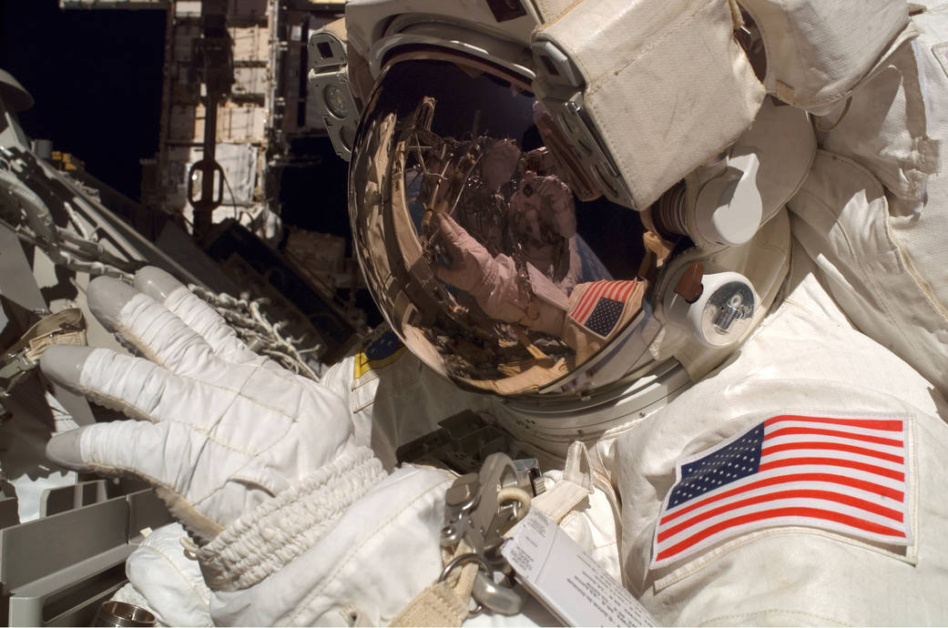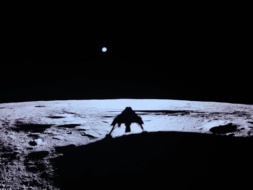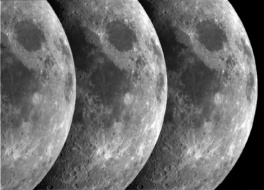NASA’s triumphant return to the Moon has begun.
Right now, Artemis I is coming to an end, as the Orion capsule hurtles back from lunar orbit for a planned splashdown this weekend. Over the next few years, NASA is planning to lay the groundwork to prepare for long-haul trips to Mars.
There’s a lot of technology to get up and running before that can happen. In-situ resource utilization, life support systems, and transportation infrastructure will all need to take major strides before we’re ready to send humans on the multi-year round trip to the Red Planet.
Last week, Parallax chatted with Jim Reilly about what we’re hoping to learn from the Artemis lunar program as we make our way toward Mars. Reilly is a former director of the US Geological Survey and NASA astronaut, and he’s a current advisor at Booz Allen. He’s spent his career thinking about how to turn a barren piece of rock into a place where humans can live, work, and learn more about our universe.
Note: This interview was edited for length and clarity.
Coming from your background as a NASA astronaut in the Space Shuttle era, how does it feel to watch the agency taking its first steps toward putting humanity back on the Moon?
It’s the perfect timing for that, to be honest. The last project I worked on before I left NASA was the Orion capsule, in terms of crew systems and other things. So it’s really exciting to see that vehicle flying as part of the Artemis program. We’re really getting back to the question of what it is that we’re doing with it. You know, why are we going to the Moon?
As a geologist, the moon is a fascinating place. We only have six spots that we know anything about on the surface of the moon, and those are the Apollo landing sites. That’s the equivalent of having four or six spots on the surface of North America, and then trying to figure out what’s going on in North America. There’s a lot of areas that we know nothing about on the moon, and that will be an interesting experience to actually go and start looking at what’s available to us, what resources are there, and how we can use them.
How can building a sustained presence on the Moon help us get to Mars?
You can think of the moon as being a testbed where we refine the capabilities that we’re gonna need to have on Mars. Mars is an interesting challenge, since there’s only a few opportunities about 26 months apart where you can actually get to or from Mars. So by the time we go to Mars, we’re gonna have to have this whole system pretty well understood.
What are the resources available to us on the lunar surface?
So two things are really critical. One is water. We’re pretty certain that there is water on or under the surface of the moon, and the questions, really, are how much, and where is it, and is it in a volume that we can use? That’s going to be one of the first questions we’ll want to answer.
The second is that there are a number of metal oxides that would be very useful—titanium oxide, magnesium oxide, all of these iron oxides. All these are useful as building materials. As we mentioned, you can do an oxide reduction reaction to separate the oxygen from the metal. You now have the base metal itself, which is now a feedstock for things you might build on the surface of the moon, or build in space. Use that as a raw resource, and that’s a 30% reduction in your cost.
Why does lowering the cost of building on the Moon matter for a future Mars program?
If you were to fly to Mars in a conventional sense, the way we’ve operated the International Space Station, the cost of a single mission would be around $100 billion. That’s about four times NASA’s current budget for a single mission. And that’s probably not going to happen.
We’re going to have to figure out how we use in-situ resources, and that begins on the Moon. What we want to do is learn what we can do on the moon to develop in-situ resource utilization that lowers the cost. Then, second, we learn what we can build in space that doesn’t have to be on the ground.
What is the digital twin technology you’re working on now to advance the Moon-to-Mars program?
At Booz Allen, we’re looking at the human as a system of systems to create a digital system. The question is, how do you get enough information to characterize you and me as different humans and to understand how we respond to different things? For example, how do we respond to pharmaceuticals? Once that’s well understood, now you can 3D print pharmaceuticals on Mars rather than having to carry a big basket of drugs. That’s going to be a functional requirement once we go to Mars, but we can establish that on the Moon, and start building these digital systems on the Moon. That’s the real beauty of what I see coming.




